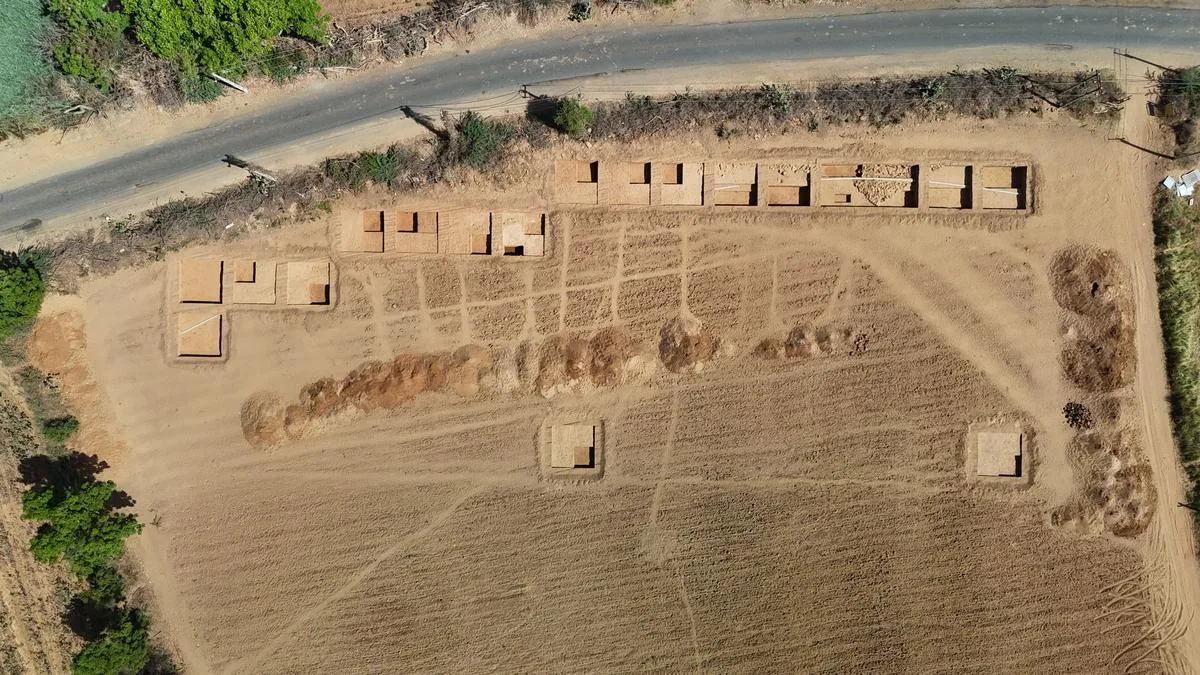In a significant archaeological breakthrough, a team from the University of Kerala has unearthed a 5,300-year-old Early Harappan settlement near Lakhapar village in the Kachchh region of western Gujarat. The discovery offers rare insights into the domestic life of a civilisation that thrived around 3300 BCE.
The site is situated along the now-defunct Gandhi river and spans approximately three hectares on either side of the Gaduli-Lakhapar road. First identified in 2022, the excavation was led by Dr Abhayan G.S. and Dr Rajesh S.V. of the Department of Archaeology, University of Kerala. The excavation forms part of a collaborative initiative involving both national and international research institutions.
The Lakhapar settlement is located just 1.5 kilometres from Juna Khatiya, an Early Harappan necropolis where the same team has previously documented 197 burials across three excavation seasons since 2019. The latest findings now provide vital habitation context to these burials, suggesting the existence of a closely linked and vibrant cultural landscape in the arid Kachchh desert.
Excavations have revealed structural features, including walls constructed from local sandstone and shale, indicative of well-planned architectural practices. Notably, ceramic fragments from both the Early and Classical Harappan periods have been recovered, including the exceptionally rare Pre-Prabhas Ware. This type of pottery, previously known from only three sites in Gujarat, signifies the presence of a culturally distinct group within the broader Harappan civilisation.
Among the most remarkable discoveries is a human burial found within the settlement zone. Although the skeleton is in a poor state of preservation, it was interred directly in a pit without visible markers and accompanied by Pre-Prabhas Ware pottery. This marks the first instance of this rare ceramic type being associated with a burial, potentially indicating unique ritual practices or the existence of a hitherto undocumented subgroup within the Early Harappan population.
Dr Abhayan highlighted the variety of artefacts recovered, including semiprecious stone beads crafted from carnelian, agate, amazonite and steatite, as well as shell ornaments, copper items, terracotta artefacts and lithic tools. Of particular interest are blades made from Rohri chert, suggesting cultural and trade links with the Sindh region.
Animal remains recovered from the site include those of cattle, sheep, goats, fish and edible shell fragments, pointing to a subsistence strategy that combined pastoralism with the exploitation of aquatic resources. Samples have also been collected for archaeobotanical analysis to further understand ancient plant use and dietary practices.
Dr Rajesh noted the significance of the Lakhapar site, observing that while several Early Harappan burial grounds have been identified in Gujarat — such as at Dhaneti — corresponding settlements have remained elusive. The discovery at Lakhapar, therefore, represents a major step forward in understanding the relationship between mortuary and domestic spaces in Early Harappan culture.
This pioneering excavation not only enhances our understanding of prehistoric life in Gujarat but also underscores the importance of interdisciplinary collaboration in unravelling the complexities of South Asia’s ancient past.
